Butterflies and Moths
Media
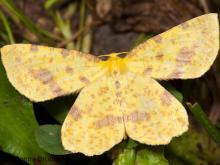
Species Types
Scientific Name
Xanthotype spp.
Description
“Zantho-tippies” are named for their yellow color (“xantho” means yellow). “Geometer” means earth-measurer, for their “inchworm” caterpillars.
Media
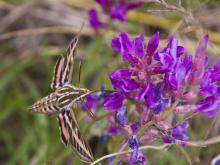
Species Types
Scientific Name
More than 50 species in Missouri
Description
Sphinx moths are usually large and heavy bodied, with a long, pointed abdomen. Members of this family often hover near flowers, feeding on nectar and looking like hummingbirds or bumblebees.
Media

Species Types
Scientific Name
Amphion floridensis
Description
The Nessus sphinx is a common Missouri moth. It hovers near flowers, collecting nectar, during the day and at dusk. The caterpillars eat plants in the grape family, including Virginia creeper.
Media

Species Types
Scientific Name
Hemaris diffinis
Description
The snowberry clearwing is a moth that confuses people because it looks like a bumblebee and flies like a hummingbird!
Media

Species Types
Scientific Name
Hemaris thysbe
Description
The hummingbird clearwing is a common Missouri moth. Like many other sphinx moths, it hovers near flowers, collecting nectar, during the day and at dusk. Look for them April into September.
Media
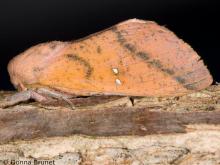
Species Types
Scientific Name
Syssphinx bicolor (syn. Sphingicampa bicolor)
Description
Honey locust moths are gray in spring and increasingly yellow, tan, or rusty later as the season progresses. The hindwings are typically rose-colored.
Media
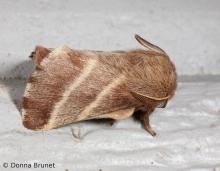
Species Types
Scientific Name
About 35 species in North America north of Mexico
Description
Tent caterpillar moths and lappet moths are medium-sized, with thick, long scales that make them look furry. The abdomen usually extends past the wings when they are folded back over the body.
Media
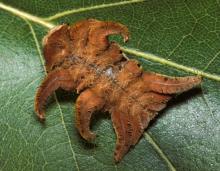
Species Types
Scientific Name
More than 20 species in Missouri
Description
Adult slug caterpillar moths are heavy-bodied and furry. The weird-looking caterpillars have suckers instead of prolegs, so they glide around like slugs. Don’t touch — many have stinging spines or hairs.
Media

Species Types
Scientific Name
Estigmene acrea
Description
The salt marsh moth, a type of tiger moth, is strikingly white with small black spots. Males have yellow-orange hindwings. The caterpillars are fast-moving woolly bears ranging from yellowish to brown to blackish.
Media

Species Types
Scientific Name
Halysidota tessellaris
Description
Adult banded tussock moths have a distinctive checkered pattern on the wings. The fuzzy, dirty gray caterpillars are more familiar, with their pencils or tussocks of longer, black and white hairs.
See Also


Media

Species Types
Scientific Name
About 1,500 species in North America north of Mexico
Description
Adult caddisflies are mothlike. Their larvae are aquatic and build portable, protective cases out of local materials, including grains of sand, bits of leaves and twigs, and other debris.
Media

Species Types
Scientific Name
Corydalus cornutus
Description
Adult eastern dobsonflies are huge and mothlike, with large wings and a weak, fluttery flight. The fiercely predaceous aquatic larvae, called hellgrammites, are well-known to anglers, who often use them as bait.
About Butterflies and Moths in Missouri
Butterflies, skippers, and moths belong to an insect order called the Lepidoptera — the "scale-winged" insects. These living jewels have tiny, overlapping scales that cover their wings like shingles. The scales, whether muted or colorful, seem dusty if they rub off on your fingers. Many butterflies and moths are associated with particular types of food plants, which their caterpillars must eat in order to survive.





















